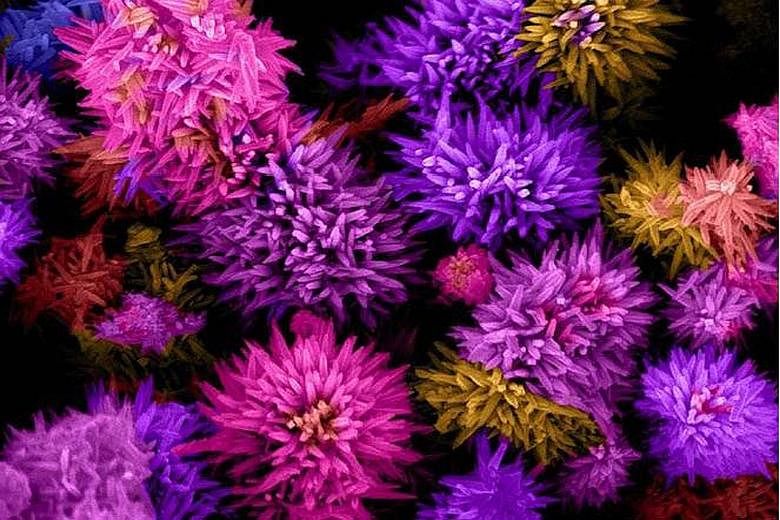These nanoflowers are tiny, metallic compounds measuring only about 1 micrometer - about 100 times smaller than the thickness of a strand of human hair. Because they are so small, each nanoflower has a large surface area - increasing the rate of chemical reactions at the surface. This makes them useful in the development of solar cells and batteries.
These zinc-doped tin oxide images were taken using a technique known as emission scanning electron microscopy, and magnified 20,000 times by researchers at the Nanyang Technological University's Energy Research Institute.
Because the microscope can capture images only in varying shades of grey, the images were then post-processed to give them the bright colours seen in this photo.
The institute focuses on sustainable energy, energy efficiency and infrastructure, and socio-economic aspects of energy research, and has used these nanostructures successfully for solar cells in academic studies.

